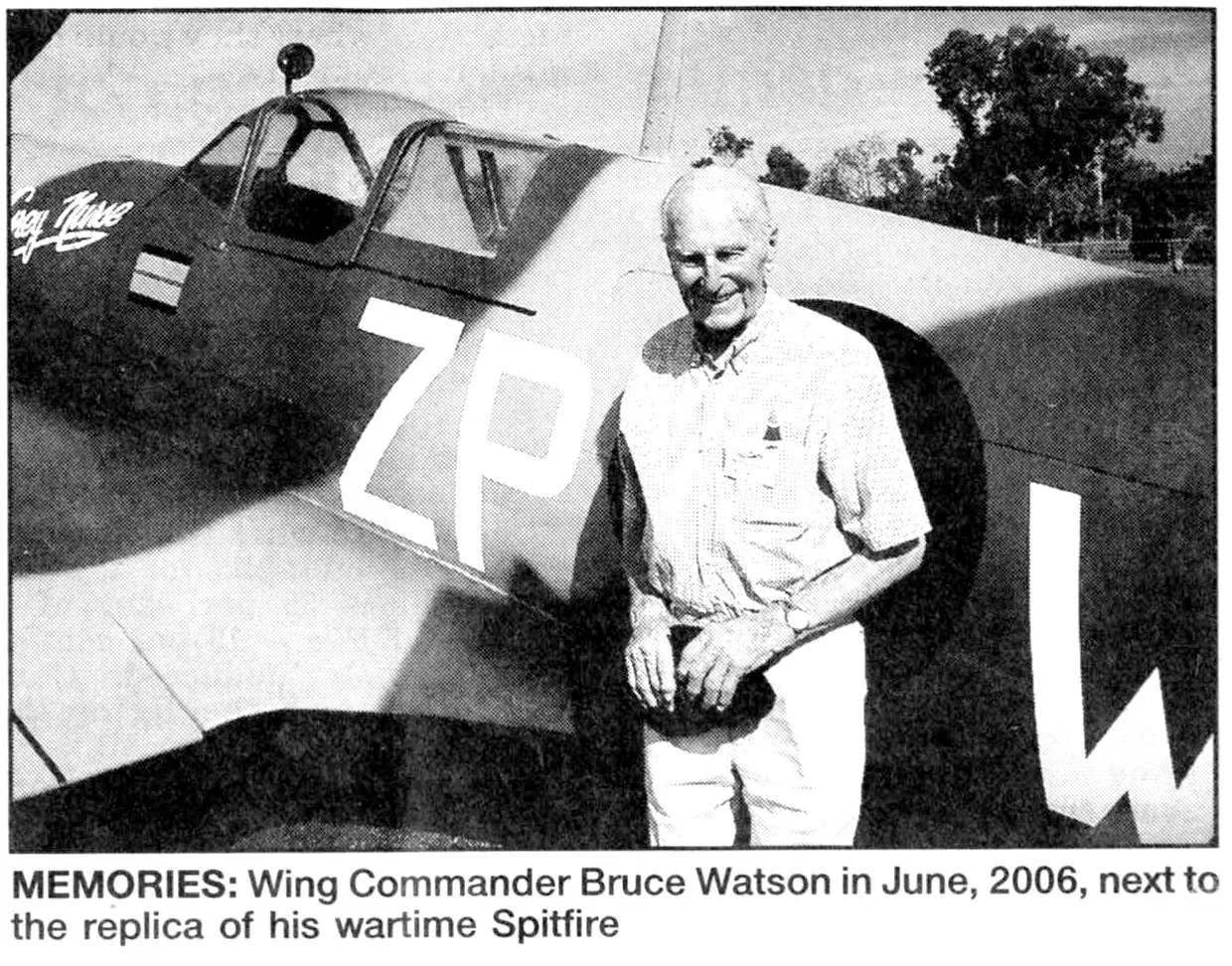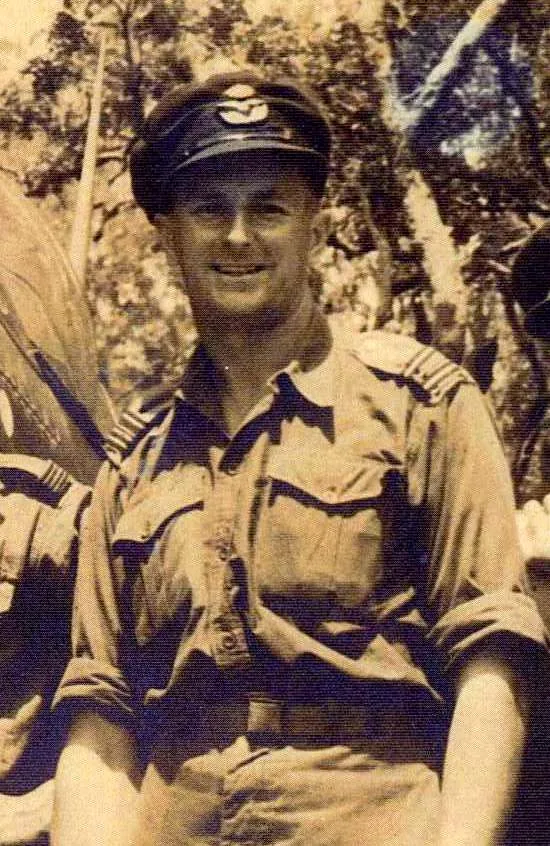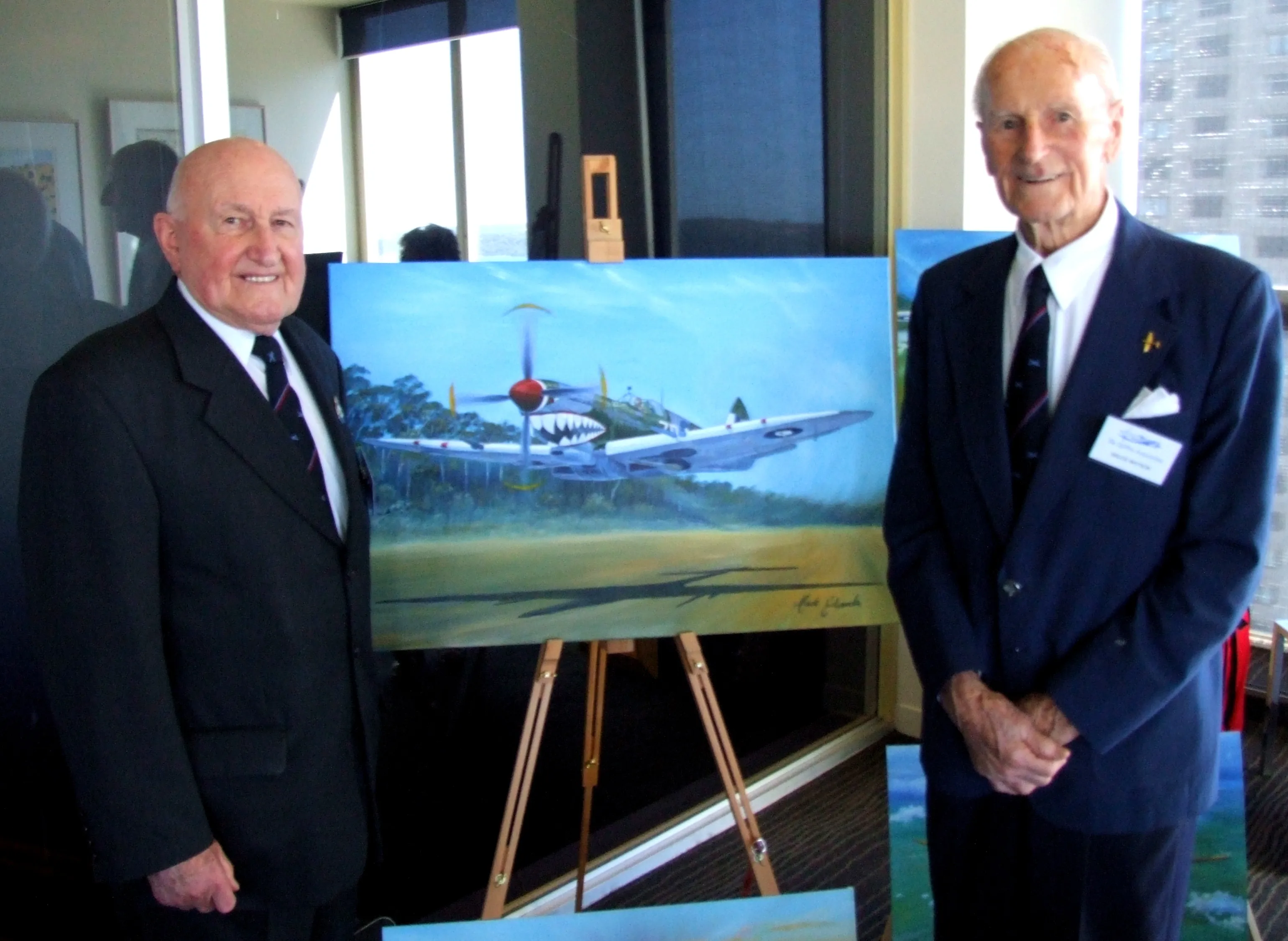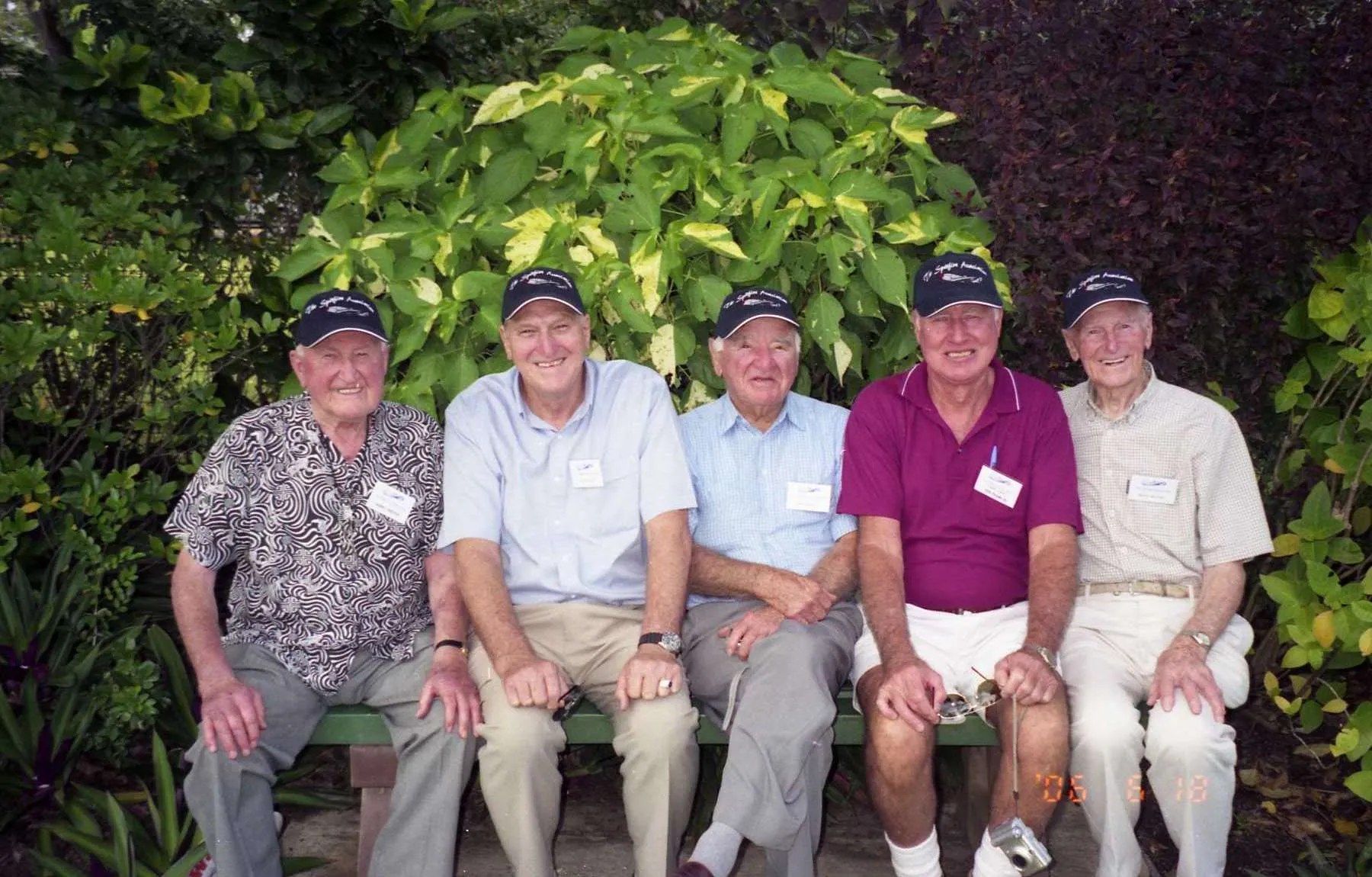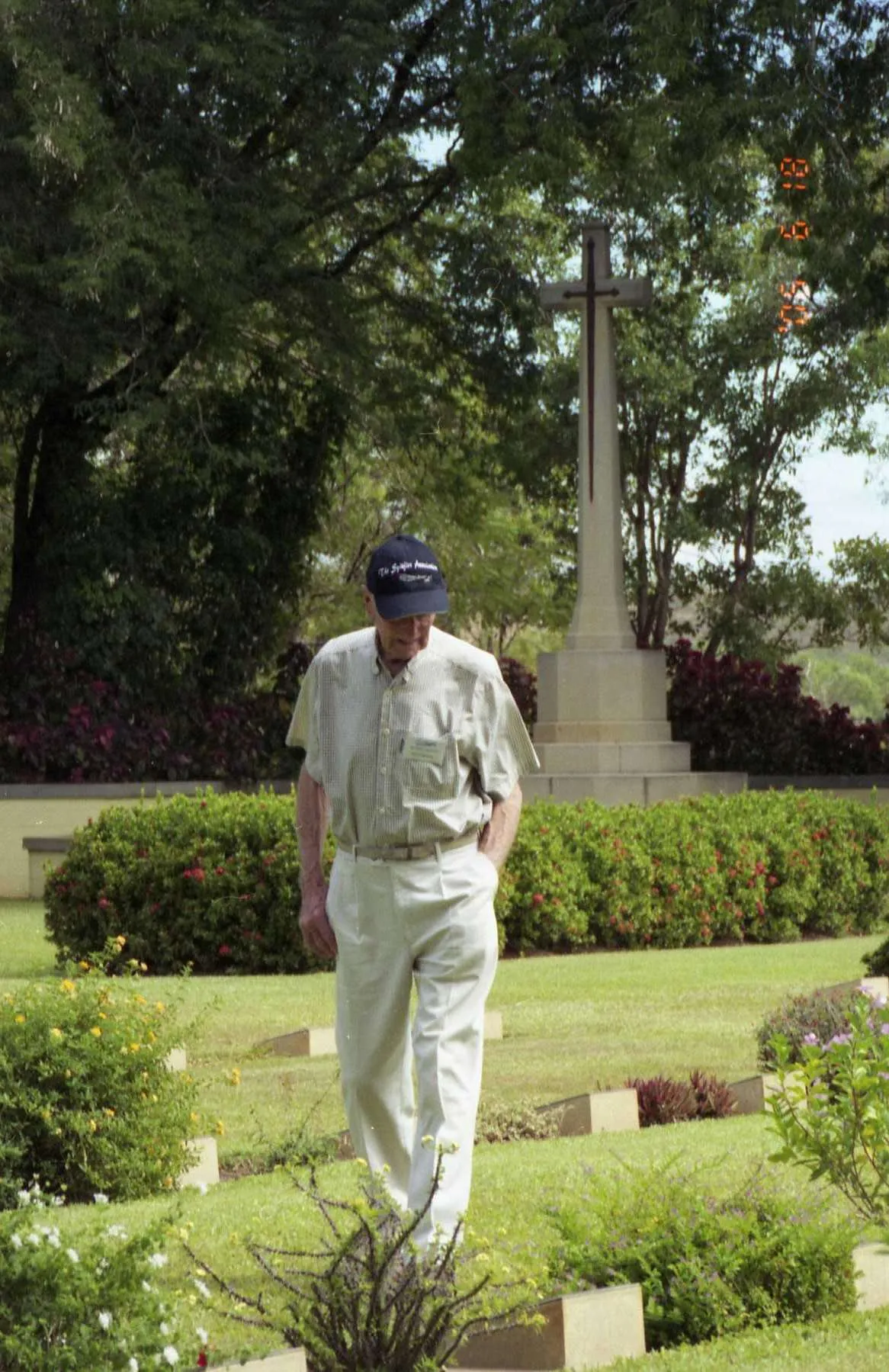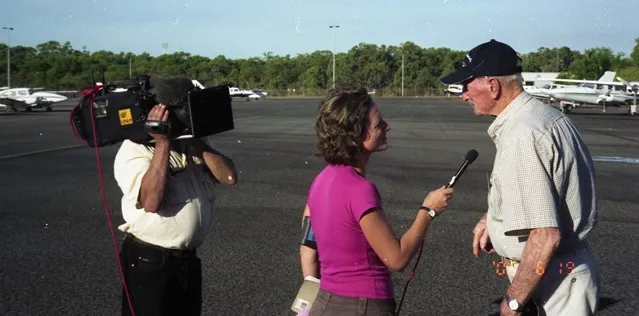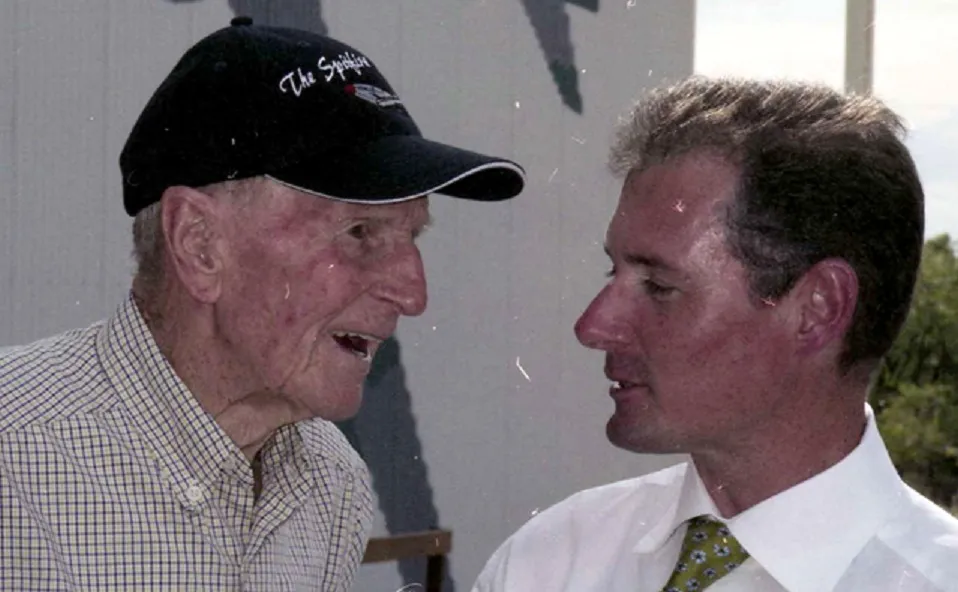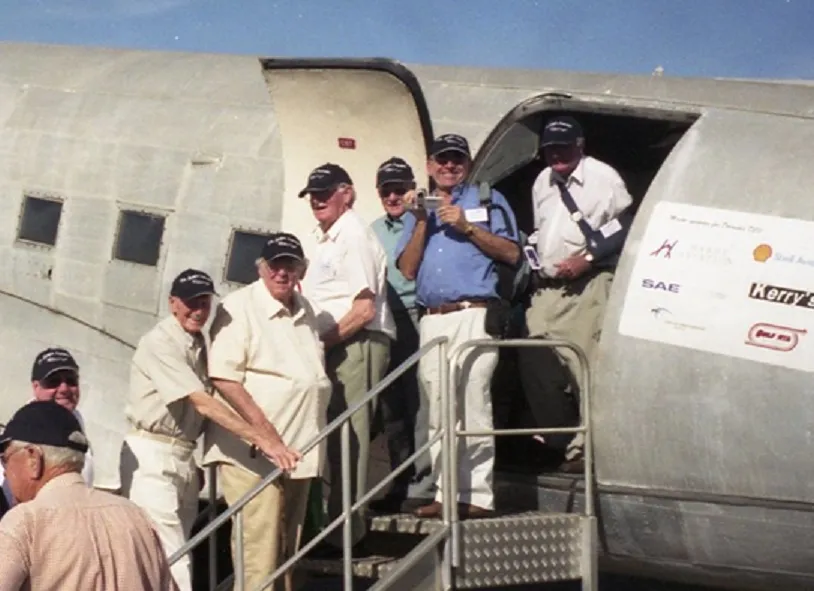SQNLDR Bruce Dudridge Watson 403084
DFC
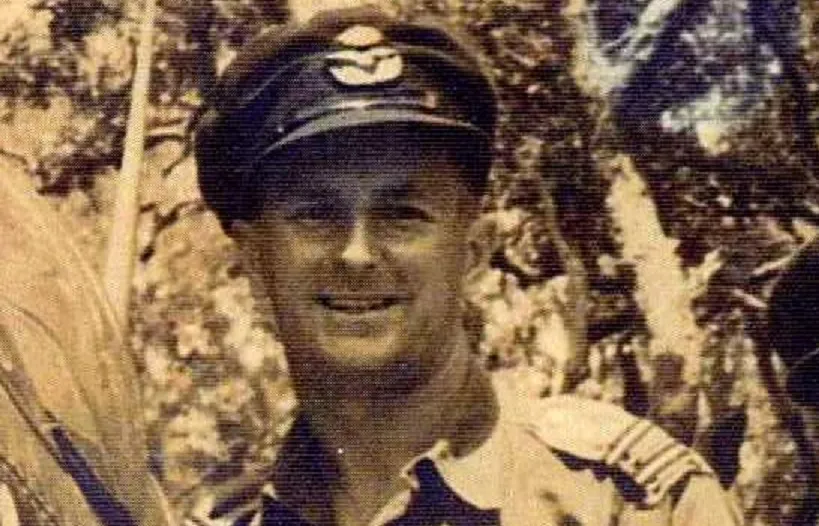


| Squadron/s | 457 SQN 2 OTU 75 SQN 32 SQN RAF |
| Rank On Discharge/Death | Squadron Leader (SQNLDR) |
| Mustering / Specialisation | Pilot |
| Date of Birth | 15 Oct 1914 |
| Date of Enlistment | 09 Dec 1940 |
| Contributing Author/s | Compiled by The Spitfire Association November, 2009 |
Bruce Dudridge Watson was twenty-six when he joined the RAAF having been born at Strathfield on 15 October, 1914. He enlisted at No. 2 Recruiting Centre Sydney on 9 December, 1940 and was immediately posted to Bradfield Park to do his initial training. When he'd completed his "rookies", Bruce joined No. 8 Elementary Flying Training School at Narrandera NSW, starting his course on 6 February, 1941. After a couple of months, during which he mastered the Tiger Moth, he was posted to No.2 Embarkation Depot to await his transfer to Canada where he was to undergo his service flying training. He sailed from Sydney on 22 April, 1941 after being transferred to the RCAF on that date. He disembarked at Vancouver and proceeded to No.11 SFTS arriving there on 16 May, 1941. Having successfully finished this course, Bruce was awarded his Flying Badge on 23 July, 1941 and was promoted to Sergeant Pilot four days later. Just prior to his departure from Halifax to England, Bruce was granted a commission and promoted to Pilot Officer. He disembarked in England on 29 August, 1941 and was then posted to No. 32 Squadron (R.A.F.), a unit that had a fine record defending England throughout the Battle of Britain the year before. During his time with No. 32 Squadron, Bruce flew Hurricanes and rendered valuable service. A part of his citation for The Distinguished Flying Cross states:-
'He has served with No. 32 Squadron (R.A.F.) in England where he shared in the destruction of flak ships, "E" boats, and coastal gun positions.'
Bruce was promoted to Flying Officer on 28 January, 1942. In April of that year he embarked for his return to Australia arriving home on 4 June, 1942. Following a short leave break Bruce joined No. 75 Squadron RAAF, flying P-40E Kittyhawkes. Previously the squadron had served in the Port Moresby area and about two months after Bruce was posted to it, the squadron was sent to Milne Bay to help in the defence of the eastern flank of PNG in the event of a Japanese attack. This was not long in coming and again Bruce's citation provides some detail:-
'He served with No. 75 Squadron during the Milne Bay battle where he shared in the destruction of barges, ammunition dumps and stores, light tanks and motor transport vehicles.'
On it's return to Australia, the squadron was stationed at Horn Island and then Cairns and Bruce was appointed as acting C.O. for a short time from 29 December, 1942.
Bruce's next posting was to No. 2 Operations Training Unit at Mildura commencing on 1 February, 1943. This was about the time that the first Spitfires from No.1 Fighter Wing were making their way north to Darwin via Mildura. He remained with the unit for approximately twenty months playing a valuable role in preparing many pilots to face the hazards of wartime operations. It was during this period too that Bruce was promoted to Flight Lieutenant on 28 July, 1943. At the end of his term at Mildura, he spent a short time at the RAAF Staff School at Mount Martha near Melbourne.
In June 1944, what had been No. 1 Fighter Wing became No. 80 Spitfire Wing, a unit still under the leadership of Wing Commander Clive Caldwell. Later that year, on 27 November, Bruce was posted to Sattler airfield in the Northern Territory as Squadron Leader of No. 457 Squadron flying Mark viii Spitfires. At this time the Japanese raids on Darwin had finished, the last one taking place in November, 1943. The war had moved north and Bruce's squadron together with others in No.80 Spitfire Wing were sent to Morotai and later to Labuan. Again the citation provides information about Bruce's service:-
'At Labuan, he has led his Squadron with outstanding determination and courage, and has shared in the destruction of one and the damage of five enemy aircraft on the ground, the destruction and damage of many enemy vehicles, houses and stores.'
Whilst at Mildura, Bruce established a friendship with Clive Caldwell who was posted there towards the end of 1943. It was an association that was to endure for a long time after the war but it began on quite formal terms having regard to the differences in rank. When No. 80 Fighter Wing was ferrying its planes to Morotai, one of the other squadrons in the group, No. 452, lost one pilot and three Spitfires in a tragic accident at Merauke. Bruce's squadron was the next to go and Caldwell bet him twenty pounds that he couldn't get his planes to Morotai without loss. Just after leaving Darwin, one Spitfire had to turn back because of fuel problems. It landed safely and the remaining aircraft made it to Morotai. But Clive Caldwell claimed a win based on a technicality. Although no planes were "lost" only thirty-five out of thirty-six that left Darwin reached their destination. Bruce had to pay up.
Another incident involving the Wing Commander was related by Bruce in Jeffrey Watson's book "Killer Caldwell." Bruce was one of a group of four Spitfires and two Mosquitos selected to fly to the U.S. airbase at Clark Field in the Philippines as part of a program to test fly allied planes against some captured Japanese aircraft. A couple of hours out from Morotai, the group was confronted by an extremely severe tropical storm with cloud extending from sea level to a height approaching thirty-five thousand feet. Caldwell wanted to go over the top and became extremely agitated when he found that the Mosquitos hadn't refilled their oxygen tanks prior to departure and therefore couldn't fly at the required altitude. The situation worsened when he then found out that the Mosquito pilots hadn't been navigating and that the group was pretty much lost over open waters. The weather situation became dire and it was decided the best route was under the storm. Bruce explains in an extract from Jeffrey Watson's book:-
"I've been in some frightening storms before, but when we finally got to the bottom of the storm, we were literally no more than feet above the ocean. And the waves were breaking in such a way that at one stage I called up one of the Mosquitos and said to Paddy Dempster the pilot, 'Remember this, we don't want to surf. We've got to keep above those waves.' "
After almost four hours of flying in the most atrocious conditions a landfall was made and the aircraft managed to reach a remote U.S. airfield where they were able to refuel. However that was not the end of the drama. Clive Caldwell had maintained his rage at one of the Mosquito pilots and held him responsible for their close call. On landing he drew his sidearm and threatened to shoot the pilot. Bruce stepped in and, using his powers of persuasion and reasonableness, was eventually able to get the Wingco to cool down and hand over his weapon.
At the end of hostilities, Bruce returned from Morotai to Sydney on 23 November 1945 and a fortnight later received his discharge from the RAAF.
A charismatic fellow Bruce Watson DFC was well liked by his men and a very popular member of the Spitfire Association. Bruce played golf well and in his late eighties played twice a week and off 15, not a bad effort.
Barry and Bruce were great mates and enjoyed each others company. They both had a lot in common and in between reliving old times they both believed in cleaning their cars every day.
Barry also owned a Porsche Boxter and the two lads decided to take a drive to Melbourne. On the way back on the Hume Highway Bruce asked Barry, “What this thing will do”? Barry then put his foot down further and upon flying at low altitude over a hill spied a police patrol lurking up the road. Barry stomped on the brakes but too late. With a flash of his lights and a whoop of his siren the policeman pulled them over for a quiet chat. Bruce yelled to Barry to keep on going and out run him, but Barry decided to pull over and take his medicine.
Barry said that the shock on his face of seeing two Octogenarians staring up at him with smiling faces was an amusing sight. The policeman said that did “driver” know he was doing 180 Kph and Barry quietly thanked the efficiency of the Boxter’s brakes in bringing them so quickly down from the 220 they were doing. Barry’s excuse was that he was not feeling well and was trying to get to a doctor quickly. The police officer must have seen the error of his ways and let them off with a caution. But did have his final say by asking Barry that if he was so sick, why was he going so fast.
For once the two old boys were lost for words.
